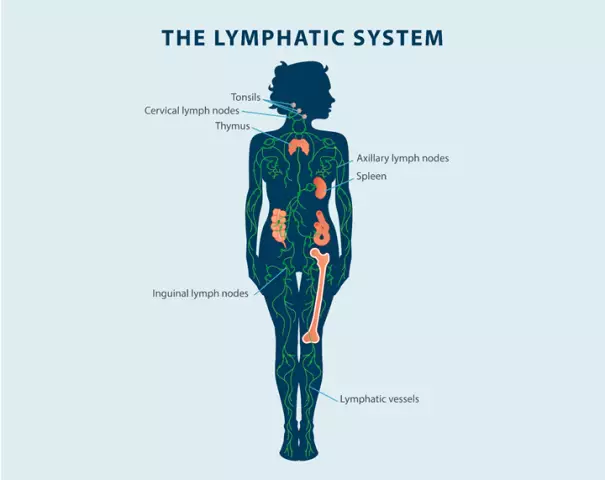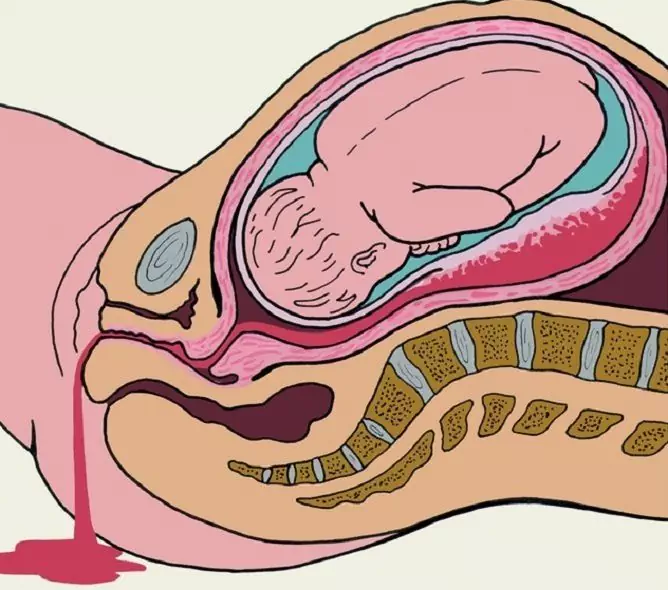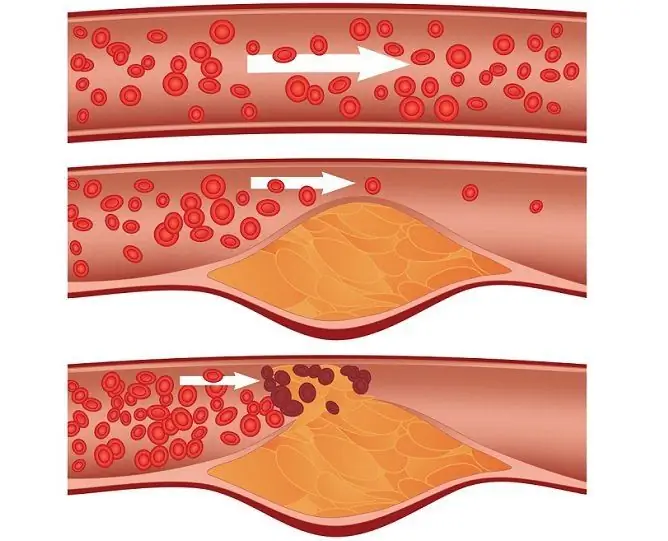- Author Rachel Wainwright [email protected].
- Public 2023-12-15 07:39.
- Last modified 2025-11-02 20:14.
Lymphedema

Lymphedema is a pathological condition in which there is an increase in swelling of the soft tissues of the lower extremities or other affected areas. The development of an outflow in lymphedema occurs due to a violation of the outflow of fluid through the lymphatic vessels.
There are primary and secondary lymphedema. Primary lymphedema develops due to congenital pathology of the lymphatic vessels and is mainly manifested in childhood (80% of patients are children under the age of 18). In 94% of cases, this type of lymphedema is caused by congenital aplasia and hypoplasia of the lymphatic vessels. In 6% of cases, lymphedema is caused by hereditary diseases. Often, severe trauma and childbirth are the causes of lymphedema.
Secondary lymphedema is more common than primary lymphedema and is the result of infections, trauma, surgery due to removal or damage of lymph nodes and burns. Secondary lymphedema is most pronounced when a combination of difficulty in lymph outflow with impaired venous outflow.
Lymphedema symptoms
The most common symptoms of lymphedema are weakness, a feeling of pain and heaviness in the affected area, and limited joint mobility. The skin in the affected area becomes thickened and pale in color.
With congenital lymphedema of the extremities, the lesion begins in the distal parts (feet or hands), then the fingers begin to swell painlessly. As the disease spreads, the swelling spreads to the feet, ankle joints, legs and thighs (if the upper limbs are affected, to the hands and wrist joints). The skin begins to look like an orange peel, and the limbs become like pillars.
Acquired limb lymphedema initially affects the proximal arms or legs, one level below the damaged lymph nodes (at the thighs or shoulders). Then the swelling spreads to the distal extremities.
Diagnosing lymphedema
Diagnosis of the disease begins with an external examination of the patient by a phlebologist, checking the history data and measuring the volume of the affected limbs. Then, through lymphangiography, the state of small lymphatic vessels is assessed, which helps to determine the nature of the course of the disease, and with the help of lymphoscintigraphy, the dynamics of the disease is studied. The pattern of isotope distribution helps to identify complete lymphostasis and assess collateral, trunk and diffuse lymph drainage. In addition to lymphangiography, it is also possible to assess lymphatic drainage and determine the state of the lymphatic system using computed tomography, duplex scanning and magnetic resonance imaging.
Lymphedema treatment
The absence of organic changes in soft tissues allows for the treatment of lymphedema with the help of conservative therapy, which includes the appointment of a course of physiotherapy, diet, physiotherapy and balneological procedures. In order to reduce the volume of the affected limb, patients are prescribed variable hardware pneumocompression, lymphatic drainage massage and wearing a bandage.
With a severe course of the disease, it becomes necessary to create bypass paths for lymph outflow and reduce the volume of the affected limb lymphedema, to achieve which surgical intervention is necessary. Surgical treatment of lymphedema can be performed by performing an operation to create lymphoiduvenous anastomoses or direct lymphovenous anastomoses, as well as partial or complete excision of the fascia, subcutaneous tissue and skin, followed by plastic surgery with a split perforated skin graft.
Treatment of lymphedema with folk remedies

It is possible to treat the symptoms of lymphedema not only with the methods of traditional medicine, but also with folk remedies, which must be combined with a complex of physiotherapy exercises. Treatment of lymphedema with folk remedies is carried out using the following procedures:
- Clay wrapping the affected limb. To carry out the procedure, it is necessary to pour the clay with water in a ratio of one to two at night, remove impurities and lumps, let it brew until morning, and then drain the water. Before applying clay to the affected area, rub mint oil into the skin, then wrap the limb with a cloth napkin, fix the bandage with a bandage and leave for 2-3 hours, periodically wetting the clay with a wet sponge;
- Application of potato, cucumber, beetroot or tomato compresses. Chopped raw potatoes (cucumber, beetroot or tomato) must be put on cheesecloth, wrapped around the affected limb and left for one hour;
- Use of kefir and rye flour compresses. In a one-to-one ratio, pour boiling water over rye flour and let it brew for 20 minutes. Then the swollen flour should be mixed with fresh kefir, and the resulting mass should be put on gauze napkins, which are applied to the affected areas and left for two hours.
Prescriptions for the treatment of lymphedema folk remedies are:
- Dry or fresh rose hips must be crushed to juice, pour a glass of boiling water, and then infuse the broth for two hours in a tightly closed container. Take the resulting liquid 10 times a day in an amount of 100-150 ml for two months;
- Two glasses of crushed birch leaves must be poured with three liters of water and boiled for half an hour. Strain the finished broth and add three more liters of cold water to it, and then pour it into a bucket into which the limb will sink. The duration of taking a therapeutic bath should not exceed 40 minutes;
- One tablespoon of chopped dandelion roots must be poured with half a liter of boiling water, cook for five minutes over low heat, insist for 15 minutes, and then strain. Take the ready-made liquid, 100 ml twice a day, and make half-hour compresses from it with a gauze bandage.
YouTube video related to the article:
The information is generalized and provided for informational purposes only. At the first sign of illness, see your doctor. Self-medication is hazardous to health!






